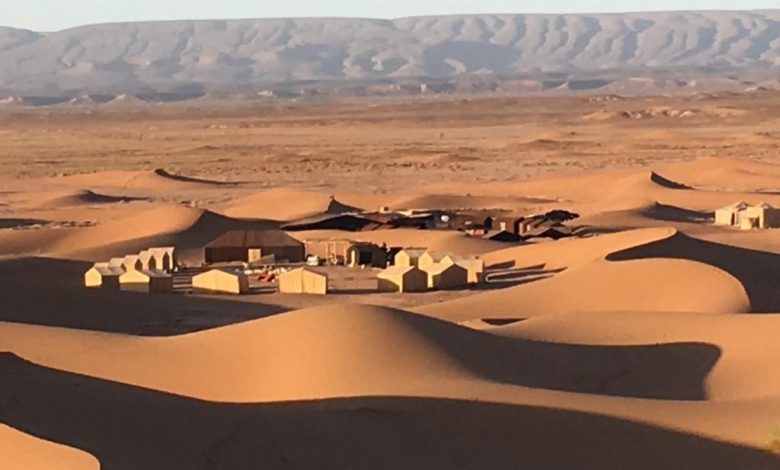Precipitation Sahara

Precipitation
The average annual rainfall ranges from very low in the northern and southern fringes of the desert to nearly non-existent over the central and the eastern part. The thin northern fringe of the desert receives more winter cloudiness and rainfall due to the arrival of low pressure systems over the Mediterranean Sea along the polar front, although very attenuated by the rain shadow effects of the mountains and the annual average rainfall ranges from 100 millimetres (4 in) to 250 millimetr
es (10 in). For example, Biskra, Algeria, and Ouarzazate, Morocco, are found in this zone. The southern fringe of the desert along the border with the Sahel receives summer cloudiness and rainfall due to the arrival of the Intertropical Convergence Zone from the south and the annual average rainfall ranges from 100 millimetres (4 in) to 250 millimetres (10 in). For example, Timbuktu, Mali and Agadez, Niger are found in this zone. The vast central hyper-arid core of the desert is virtually never affected by northerly or southerly atmospheric disturbances and permanently remains under the influence of the strongest
anticyclonic weather regime, and the annual average rainfall can drop to less than 1 millimetre (0.04 in). In fact, most of the Sahara receives less than 20 millimetres (0.8 in). Of the 9,000,000 square kilometres (3,500,000 sq mi) of desert land in the Sahara, an area of about 2,800,000 square kilometres (1,100,000 sq mi) (about 31% of the total area) receives an annual average ra
infall amount of 10 millimetres (0.4 in) or less, while some 1,500,000 square kilometres (580,000 sq mi) (about 17% of the total area) receives an average of 5 millimetres (0.2 in) or less.[21] The annual average rainfall is virtually zero over a wide area of some 1,000,000 square kilometres (390,000 sq mi) in the eastern Sahara comprising deserts of: Libya, Egypt and Sudan (Tazirbu, Kufra, Dakhla, Kharga, Farafra, Siwa, Asyut, Sohag, Luxor, Aswan, Abu Simbel, Wadi Halfa) where the long-term mean approximates 0.5 millimetres (0.02 in) per year.[21] Rainfall is very unreliable and erratic in the Sahara as it ma
y vary considerably year by year. In full contrast to the negligible annual rainfall amounts, the annual rates of potential evaporation are extraordinarily high, roughly ranging from 2,500 millimetres (100 in) per year to more than 6,000 millimetres (240 in) per year in the whole desert.[22] Nowhere else on Earth has air been found as dry and evaporative as in the Sahara region. However, at least two instances of snowfall have been recorded in Sahara, in February 1979 and December 2016, both in the town of Ain Sefra.[23]
